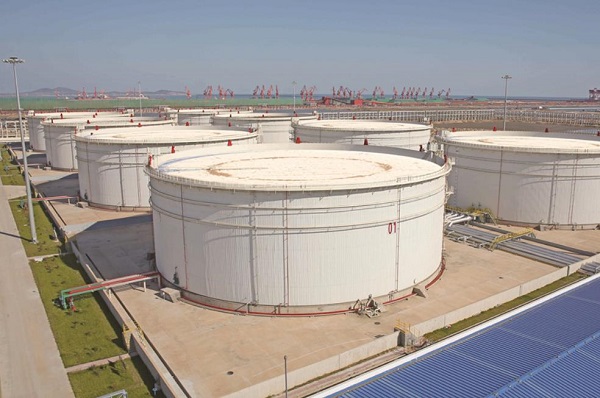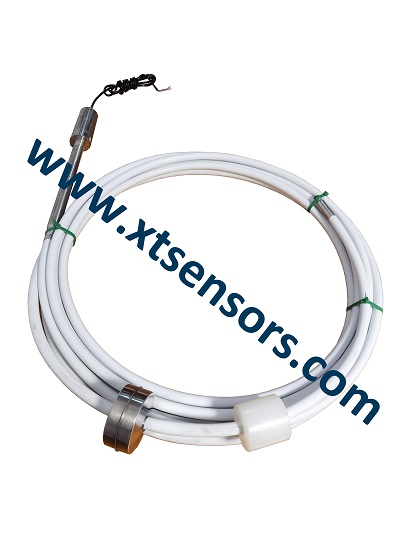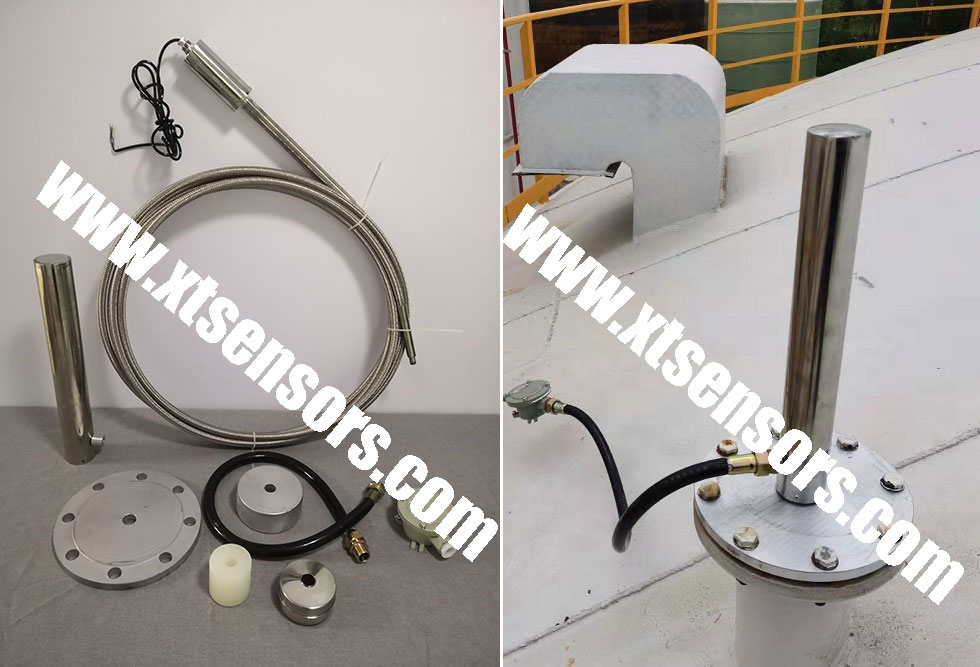Crude oil tank level measurement

Oil field crude oil has high viscosity and is highly corrosive with hydrogen sulfide.
Using PTFE material, our company has designed an explosion-proof magnetostrictive liquid level probe for crude oil.
It has anti-corrosion and non-stick oil properties, and has been very effective in many practical applications in recent years.
There is a lot of water in crude oil storage tanks. When there is too much water, the water needs to be drained in time.
Therefore, for crude oil level measurement, it is very important to measure the water level.
Our flexible magnetostrictive level sensor can measure water level, oil level and temperature at the same time,
It is very suitable for crude oil tank level measurement.
The magnetostrictive probe has 5 temperature sensors, which can measure the medium temperature at five different positions in the oil tank.
Allows you to grasp the medium temperature of the crude oil storage tank at any time.
In the crude oil tank, in addition to crude oil and water, there is an emulsified layer.
The emulsified layer generally does not need to be measured.


Send us your inquiry, Our engineers give you solutions
sales@kunlunsensors.com
After the oil is extracted from the ground, due to technological reasons, it will contain a large amount of water, which requires oil-water separation.
The accuracy and reliability of oil-water interface measurement play a very important role in oil-water separation.
At present, a large number of traditional capacitive level gauges are used for oil-water interface measurement in oil fields, and users report that there are problems with large errors and unstable measurement.
Whether the oil and water can be separated reliably is of great importance for ensuring the quality of crude oil products, and the accuracy and reliability of the oil-water interface measurement is the key to ensuring the reliable separation of oil and water!
Oil production plants and transfer stations in oil fields are remote and scattered. Therefore, they have different requirements for oil-water interface measuring instruments: not only accurate and reliable, but also simple to use and no maintenance.
Magnetostrictive probes provide users with an unprecedented use experience by virtue of their precise measurement and ready-to-use features, and have been highly praised by users.
Site conditions
After the crude oil enters the transfer station, it passes through the primary and secondary oil-water separators to separate oil, water, and gas, and controls the oil-water separation through the oil-water interface meter.
Difficulties in measurement
1. Crude oil has a certain viscosity, and is easy to wax, and it is easy to cause adhesion on the measuring tube;
2. When the crude oil is heated, steam will be generated, which is easy to produce condensation at the root of the antenna and then form wax;
3. The oil contains a variety of chemicals, such as demulsifiers, guar gum, drainage aids, corrosion inhibitors, etc., which will produce a thicker emulsified layer in the oil-water separator;
4. There will be bubbles on the oil surface;
5. The thickness of the oil phase can be up to 1m;
Technical advantages
Due to the principle advantages of magnetostrictive probe and unique technological innovation, the problem of oil-water interface measurement in oilfields is easily solved, and installation and debugging are easier, which brings users the best experience.
1. Due to its unique measuring principle, the magnetostrictive probe can measure the oil level and interface at the same time, so it is suitable for working conditions where the interface and oil level will change.
2. The magnetostrictive sensor can be made of tetrafluoroethylene outer tube material, which has anti-corrosion and non-sticky oil properties, and because of the flexibility of the probe, its transportation and installation are extremely convenient.
Related Products:
Magnetostrictive level transmitter